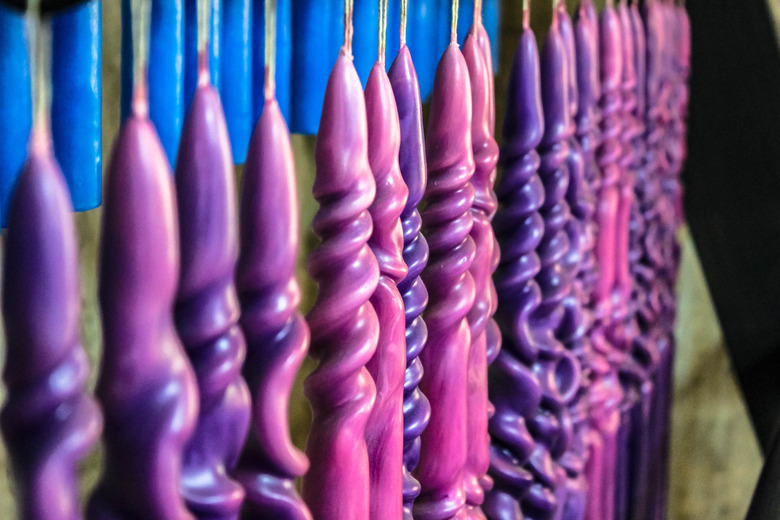How To Calculate The Heat Of Combustion Of Paraffin Wax
The heat of combustion is the amount of heat or energy it takes to burn something. Learning to measure and calculate the heat of combustion of various substances is a popular and valuable learning experience for chemistry students. It helps students understand how to define the energy that goes into a chemical reaction through hands-on experience. This knowledge can translate to a better understanding of chemical reactions, such as the combustion of fuel in a car into energy or calories from food into energy for bodies. Use this experiment designed with simple tools to calculate the heat of combustion of paraffin wax.
Experiment
Step 1
Measure 100 mL of water and pour it into an empty soda can. Suspend the thermometer in the water using Sticky Tack in the lip to hold it in place. The thermometer should not touch the bottom or sides of the can. This device is called a calorimeter.
Step 2
Cut the other soda can 1 or 2 inches from the bottom. Throw away the top. Measure the mass of the bottom of the soda can. Measure the mass of the candle, and place it in the bottom of the soda can.
Step 3
Check the temperature of the water. Light the paraffin candle and, holding your calorimeter with the tongs, move it over the burning paraffin just high enough so there is enough oxygen to keep the fire burning. Be careful not to touch the can or burn yourself.
Step 4
Watch the thermometer and note the temperature when the candle stops burning. Measure the mass of the candle in the bottom of the soda can and subtract the mass of the bottom of the soda can as measured in Step 2.
Calculations
Step 1
Subtract the final candle mass from the initial candle mass to calculate the total mass burned. Subtract the initial temperature from the final temperature to measure the change in temperature.
Step 2
Assume 1 mL of water equals one gram; therefore, this experiment used 100 grams of water, and it takes 4.18 Joules (J) to raise 1 gram of water 1 degree Celsius. Multiply the grams of water by the change in temperature by 4.18 J to measure the total thermal energy it took to bring the temperature to its highest point in Joules.
Step 3
Divide the the thermal energy created by mass (in grams) of the candle that were burned to calculate the heat of combustion of paraffin wax expressed in J/g.
Things Needed
- Paraffin wax candle
- Cool water
- Two empty soda cans
- Tongs
- Thermometer (Celsius)
- Sticky Tack
- Lab scale
- Lighter
Warning
Do not touch your calorimeter during or directly following the experiment. It will be hot.
Cite This Article
MLA
Webb, Amber. "How To Calculate The Heat Of Combustion Of Paraffin Wax" sciencing.com, https://www.sciencing.com/calculate-heat-combustion-paraffin-wax-5038072/. 13 March 2018.
APA
Webb, Amber. (2018, March 13). How To Calculate The Heat Of Combustion Of Paraffin Wax. sciencing.com. Retrieved from https://www.sciencing.com/calculate-heat-combustion-paraffin-wax-5038072/
Chicago
Webb, Amber. How To Calculate The Heat Of Combustion Of Paraffin Wax last modified August 30, 2022. https://www.sciencing.com/calculate-heat-combustion-paraffin-wax-5038072/
